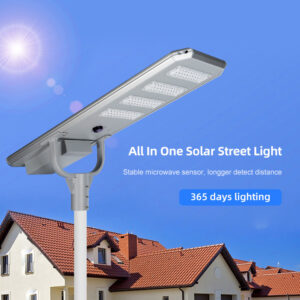The evolution of street lights and smart cities has led to the development of innovative lighting solutions that provide illumination, enhance the safety and security of the urban environment, and reduce energy consumption.
Chapter 1: The Evolution of Street Lights
Street lights have come a long way since their inception, from gas lamps to electric lights and now energy-efficient LED lights. The evolution of street lights has focused on improving energy efficiency, reducing maintenance costs, and enhancing the safety and aesthetics of the urban environment.
Chapter 2: Smart Cities and Lighting
Smart cities use technology to improve the quality of life for their citizens. Smart lighting is an integral part of smart city solutions, providing illumination and enhancing the safety and security of the urban environment. Smart lighting systems use sensors and controllers to adjust lighting levels based on ambient lighting conditions, reducing energy consumption and maintenance costs.
Chapter 3: The Benefits of Smart Lighting
The benefits of smart lighting include:
- Energy Efficiency: Smart lighting systems can reduce energy consumption by up to 50%, reducing the carbon footprint of cities.
- Improved Safety: Properly lit streets and public spaces reduce the risk of accidents, crimes, and other forms of violence.
- Increased Visibility: Smart lighting provides illumination, making it easier to see and navigate through roads, sidewalks, and public spaces.
- Reduced Maintenance Costs: Smart lighting systems provide real-time data on the performance of individual streetlights, making it easier to detect and address maintenance issues proactively.
Chapter 4: The Future of Street Lights and Smart Cities
The future of street lights and smart cities is focused on creating more sustainable, efficient, and safer environments for citizens. The future of street lights includes:
- Connected Lighting Systems: Connected lighting systems will use the Internet of Things (IoT) to connect streetlights, sensors, and controllers, enabling them to communicate with each other and with a central management system.
- Dynamic Lighting Solutions: Dynamic lighting solutions will use color-changing LEDs to create vibrant and attractive lighting displays that enhance the aesthetics of the urban environment.
- Autonomous Lighting Systems: Autonomous lighting systems will use artificial intelligence (AI) to adjust lighting levels based on traffic patterns, weather conditions, and other factors, reducing energy consumption and enhancing the safety of the urban environment.
Conclusion:
The evolution of street lights and smart cities has led to the development of innovative lighting solutions that provide illumination, enhance the safety and security of the urban environment, and reduce energy consumption. By implementing smart lighting systems, connected lighting systems, dynamic lighting solutions, and autonomous lighting systems, cities can create more sustainable, efficient, and safer environments for their citizens. The future of street lights and smart cities is bright, and it is up to cities to embrace these innovative solutions to create a better future for their citizens.










